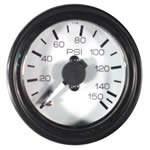

|
|
Full-Time 5 Week Program Part-Time 12 Weekend Program 80 hour Refresher Course Class B Passenger Endorsement |
|||||
| Who Needs a CDL? | |||||
|
Under national (federal) rules you need a CDL if you operate any of the following vehicles: A single vehicle with a gross vehicle weight (GVWR) of more than 26,000 pounds. A trailer with a gross vehicle weight (GVWR) of more that 10,000 pounds. A vehicles that carries amounts of hazardous materials that need placards. A vehicle that carries more than 15 persons including the driver. There are four special endorsements and one special restriction for the CDL. All of these require certain written knowledge tests. All CDL applicants must pass a CDL General Knowledge Test. |
|||||
| CDL Tests: | Air Brakes Test: |
 |
|||
| General
Knowledge Test Air Brakes Test Doubles/Triples Test Hazardsous Materials Test. |
To drive a truck that has Air Brakes you will need to pass an Air Brake written and performance test. | ||||
| Topics we cover: | ||||
| Safety | Special Rigs | |||
| Transporting Cargo | Hazardous Material Handling | |||
| Basic Controls | Air Brakes | |||
| Trip Planning | Navigation | |||
| Coupling & Uncoupling | Air Brakes | |||
| Call us now and be employed | and driving within 6 weeks | (304) 375-4140 or toll free | (866) 813-9906 | |
|
|
||||
|
| Amount of students needed to make a class. | ||
| Call (304) 375-4140 or toll free (866) 813-9906 to check availability. |
|
|
||||
| The Prerequisites you need to enroll today are: | ||
|
| How Much Does It Cost? | Funding Provided by: | ||
| Full-Time 5 Week Program | $4,050 | as of Jan 2006 | WorkForce of Ohio or West Virginia |
| Part-Time 12 Weekend Program | $4,050 | as of Jan 2006 | Direct loans for qualified students |
| 80 hour Refresher Course | $1,500 | as of Jan 2006 | All major Credit Cards accepted |
| Class B Passenger Endorsement | $2,000 | as of Jan 2006 | Veterans Administration |
|
Ohio Valley Truck Driver
Training supplies the student with all the necessary teaching aids to complete the classes. All related material for the student is supplied. * Paper, pens, etc.. * PTDI Student books and related manuals * Road Atlas * Overhead Transparencies * Simulator for Air Brakes * Driving Simulator * Log Book * 4.5 Acre Training Lot * 5 Kenworths and 4 Volvo Semi's * 72 Passenger Bus | |||||
| If you think the schooling is pricey wait
till you see how much your first paycheck is. Driving a Semi Truck is not hard however, there are a few things that are important. |
|||||
Trucking offers one of Americas best prospects for long term growth and employment. |
|||||
Truck driving has been named one of the ten best "in demand" jobs in the nation. |
|||||
| This is what we cover in our 5 week course (partial list). Control Systems Clear understanding of rules and regulations Working knowledge of the trucking industry Importance of primary and secondary vehicle control systems the rules and regulations of hours of service (how many hours till you exceed the limit) Daily drivers log Preventive Maintenance Pre Trip Inspection Coupling and uncoupling Shifting patterns Air brake systems Log Book Proper Vehicle Control Backing Speed Management (important) Space Management Skid Control and Recovery Handling Cargo Cargo Documentation Personal Health and Safety Drugs and Alcohol Properly securing a load (your responsibility) Understanding Bill of Lading Trip Planning (Using an Atlas or Map) Communication Hazardous Materials Straight line backing Extreme Driving Conditions Driving Mountain Roads and Grades Night Driving Recognizing and Reporting Malfunctions Decision Making in emergency maneuvers Accidents and Breakdowns Permits Daily Log Night Driving |
|||||